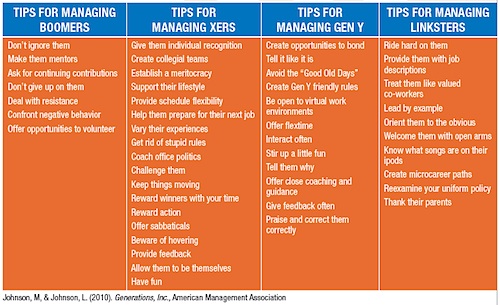Caliper: Working with Generation X, Y & Z
Effectively managing multiple generations in the workplace.
 |
 |
 |
| David Panitch is a partner in The Distributor Board, a STAFDA consulting partner with expertise in planning, sales, marketing, M&A, organization and related disciplines. |
Are you Gen X? Gen Y? Baby boomer? Generation Next? Does it matter at work? When do our differences enhance communication and productivity and when can those differences get in the way? Communication dynamics can be either a source of conflict or can lead to cooperation, collaboration and a more balanced team.
For leaders, the differences that intergenerational teams bring to the workplace can be an asset in creating a varied idea exchange as well as a source of innovation.
The power of five: Never before have five generations been represented in the labor force. From traditionalists born before 1945 to linkers born after 1995 and just beginning to enter the workforce, we are at a unique period of time in the workforce. For those who touch talent
management, the opportunities and challenges are many.
There are a lot of comments about and stereotypes of each generation. Stereotypes may be generation-specific; “Those baby boomers are self-absorbed,” “Gen Yers act entitled,” and so on. Some people understand differences exist but question why it matters: Doesn’t everyone want the same thing anyway?
While there are generational differences in both attitudes and experiences, the Center for Creative Leadership has found that most of us have similar core values, want to be challenged at work and want a leader we can trust. However, we may express ourselves differently and have preferences on how we want to communicate and be managed (see the Tips Box below).
Conflict is common: According to a recent Lee Hecht Harrison survey, 60 percent of employers report experiencing intergenerational conflict of some kind. Let’s keep in mind that the impact of intergenerational communication and conflict spans beyond the human resources department.
Organizations that successfully manage conflict embrace and accommodate differences and tend to respect what people from different generations bring to the workforce. Success stems from understanding the strengths and differences each generation offers and in turn, leveraging those strengths and creating a work environment that values them.
The economy and growth of technology mediate the impact of generations moving in and out of the workforce. As baby boomers retire, Gen X and Yers will be poised
for career opportunities. However, one impact of the current economy is that workers are delaying retirement age. The growth and speed of technology change continues to impact how we communicate and learn in the workforce. The younger generations have been referred to as “technology natives.”
Obviously, the differences between generations impacts recruiting: one size does not fit all when it comes to attracting talent! An awareness of generational differences can help companies target their recruiting strategies, especially in identifying the most effective media for communicating with appropriate candidates.

Where they live: For example, Baby Boomers are the most diverse media users, but they are not likely to create blogs and download videos. Also, although they are very internet savvy, Boomers still often read the newspaper in print form.
In contrast, Generation X reads newspapers online and is also the generation most likely to use the Internet to research job opportunities. They tend to focus on the quality of a company’s website and are more likely to listen to the radio than other generations.
When recruiting Generation Y, the best way to reach them is through technology and their peers, who are best suited to answer their questions and understand their viewpoint. They tend to be comfortable with all forms of online media, including podcasts, blogs and instant messaging, and are the only generation who prefers to communicate through cell phone texts rather than via e-mail.
By using an awareness of generational communication styles and targeting outreach to candidates through their preferred media, companies can make the best use of their recruiting dollars.
The HR executive can use this information to resolve conflicts, support team development, head off the influence of stereotypes and support, develop and retain a diverse workforce. In the words of Harold L. Sheppard, University of South Florida: “Generations are not competitors for life’s satisfactions; they are partners in the search for well-being.” CS
Jennie Hollmann, Ph.D., is director of organizational research for Caliper, STAFDA’s employee assessment consultant. Genevieve Carlton is account consultant. Visit www.caliperonline.com.
















